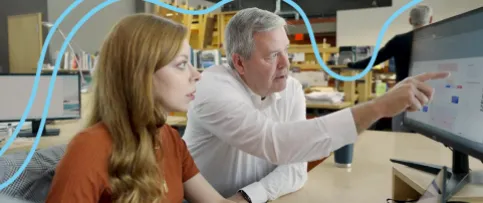Recently licensed architect Eubie Han, AIA, NCARB, LEED Green Associate, shares how he became interested in architecture, passed ARE 5.0 in under three months, and hopes the profession will evolve.
When and where did your interest in architecture begin?
As early as I can remember, my mother had enrolled me in various art classes, and I thoroughly enjoyed them. At school, I liked and excelled in math and science courses. I was a curious kid and generally more inclined toward technical subjects.
My father, who worked in the construction field, often volunteered my brother and I to participate in numerous remodeling projects. Although these were exhausting and laborious times, I learned a lot from these projects, and eventually gained an appreciation for construction. These experiences naturally geared my interests toward architecture.
Architecture is interesting in that—unlike art, where expression may be limitless—it can still be creative, yet set within boundaries framed by function. I found architecture to be the perfect balance between both my technical strengths and my passion for creativity and design.
How did you manage to pass ARE 5.0 in just under three months?
I have a lot of respect for candidates who study for the Architect Registration Examination® (ARE®) while working full-time. However, I didn’t think that would work for me. I felt the best way to maximize the effectiveness of my studies was to take some time off work to fully focus on the exams.
The most important thing I did when preparing was create a rigid, structured schedule. I treated it like a job. During those weeks—eight hours a day, five days a week—you could find me at my local library. I did this because I knew if I had stayed home, I would have had too many distractions.
I organized my study materials and created a spreadsheet that divided up the chapters to be covered each day. As I progressed, I found there to be some overlap and closely related information in the divisions, so I ended up taking some tests back to back. On average, I gave myself two weeks per division, and before I knew it, I had completed all six exams in just about 11 weeks.
Do you have any test-taking tips for candidates who are working full-time?
First, take full advantage of the experience gained at your workplace. Real-world experience is second to none in terms of gaining a well-rounded understanding of architecture and construction. Continue to excel at what you are assigned to, but also try to reach out for more responsibilities. Once you are in a position to manage a project, you can see a more comprehensive view of architectural practice. I found this to be greatly beneficial for the exams.
Second, before you start studying, make a detailed plan. Formulate a studying schedule based off of your timeline. Alternatively, consider setting aside some vacation time to study or take the exam. This might be well worth the effort if it results in a promotion and a raise.
Tell us how your mentors helped you navigate the experience program.
The firm principals and senior colleagues I worked with were all great mentors. I think there were some main elements that made my IDP (now the Architectural Experience Program®) experience successful. First off, effort and initiative were required on my end. I strived to complete each assignment with a sense of ownership and asked for more responsibilities whenever possible. The firm principals were receptive to these endeavors, and I was granted opportunities to work in various project phases to gain the experience I wanted. Most importantly, my mentors were always ready to help whenever needed. They were available to answer questions and guide me in the right direction.
How has becoming licensed and NCARB-certified enhanced your career?
Becoming licensed is a huge milestone in this profession. The license itself doesn't necessarily make you any more knowledgeable or capable, but it does make you that much more credible. Immediately, your knowledge, experience, and abilities carry much more weight and value.
With my license and NCARB certification added to my resume, I am fully able to leverage my experience and abilities. I have been offered positions at several reputable firms, and recently accepted a position at a globally recognized firm which is leading the industry with innovative and sustainable design. I now have opportunities to lead influential projects that are purpose-driven in preserving the environment, building up communities, and serving a greater social purpose.
How do you hope to see the future of architecture evolve?
I hope to see architecture address the need for affordable housing with a conscientious approach. I believe integrative and communal mixed-use strategies can be an effective solution for this. Many developments we see today have successfully embraced the mixed-use approach, however, they are typically designed for affluent markets. By bridging cost-effective housing with commercial enterprises, I believe mixed-use developments can be adapted to address the economic and social challenges of affordable housing. I hope to see these developments create more vibrant and thriving communities.
How and why did you become interested in commercial architecture?
The first firm I joined specialized in commercial architecture, and I quickly learned how broad and diverse the scope was. So far, I’ve had the opportunity to manage over a dozen different project types, ranging from restaurants and resorts, to laboratories and retail centers. The variety of projects, each with its unique set of challenges and complexities, keep the practice interesting and exciting. I’ve learned a lot from the varied spectrum of work and find enjoyment in gaining detailed insight into different programs and project types. I also find it rewarding to be able to participate in the thoughtful planning and creative design of places that affect our everyday lives.



